#mi'kmaq
Text

Basket of the Mi'kmaq people, 1860, Canada.
377 notes
·
View notes
Text
i'm not really good at posts but i'd like to leave this in memory of Mi'kmaw elder and author Daniel Paul who passed away last month.
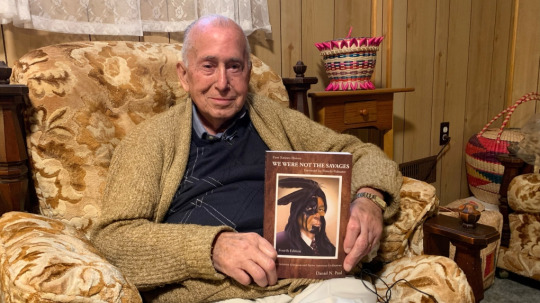
his book We Were Not the Savages is an incredibly detailed, researched, and impactful book on Mi'kmaq history, pre- and post-european contact and to the present day, including his personal experiences at the Schubenacadie Indian day school. i really don't have the words to express how important he and this book have been but it's really something to check out.
#and i'm a bit late first thought in my mind upon learning he'd died that morning was not exactly tumblr#we were not the savages#daniel paul#mi'kmaw#mi'kmaq#d:#indigenous#ndn#ndn tumblr#indigenous history
605 notes
·
View notes
Text
Cajun History and what that has to do with Palestine
Yo, you reading this? You got opinions about the fucking war in Gaza right now? You from South Louisiana like me? Then you know about the Acadian Exodus, Evangeline, the whole expulsion of the Acadians from Canada?
You ever wonder why the fuck it happened? Cause it obviously wasn't the British throwing all the french out of Canada, not with Quebec just sitting there. (Seriously, this was something that felt super implied by my teachers growing up and I have to wonder why the FUCK the whole alliance with the Wabanaki and the familial ties to the Mi'kmaq were left out of my education, maybe not wonder HARD but it's still there)
It's because the Acadians refused to turn on their Wabanaki Confederate Allies following the french and indian war, specifically the Miꞌkmaq, who the Acadians had a long history of intermarriage with. We were proof that you could integrate, peacefully, with the natives of a place and find common cause, family, and grow together. Everything the people leading Israel have proven they cannot be.
So I don't want to hear ANY shit from ANY Cajun down here about Palestinians except "Free Palestine" because boys and girls, that was our ancestors. That was us once upon a time. We are the descendants of the survivors of Genocide, the ones who refused to turn on others for their own benefit and while we've ALL had shit moments, personally and in our families, since then, that has to be something we stick too.
#free palastine#free gaza#gaza#gaza strip#gaza genocide#israel#genocide#palestine#cajun#acadiana#acadia#mi'kmaq#Wabanaki Confederacy#fench and indian war#canada#evangeline
39 notes
·
View notes
Text
Halifax councillors will look at creating a designated Mi'kmaw council seat, and reviving the idea of allowing permanent residents to vote in municipal elections.
A report on what changes would be needed to bring in various electoral reforms came before the city's executive standing committee on Monday. It noted the municipality does not have the power on its own to establish designated districts for specific groups, like African Nova Scotian, Acadian, or Indigenous representation, without permission from the provincial government.
Coun. Waye Mason of Halifax South Downtown said the timing is right, because a common theme emerged from Mi'kmaw groups during consultation on Halifax's new culture and heritage priorities plan.
"What we heard, over and over again, was 'we think there should be a Mi'kmaw seat in Halifax,'" Mason said during the meeting.
Continue Reading.
Tagging: @politicsofcanada
85 notes
·
View notes
Text
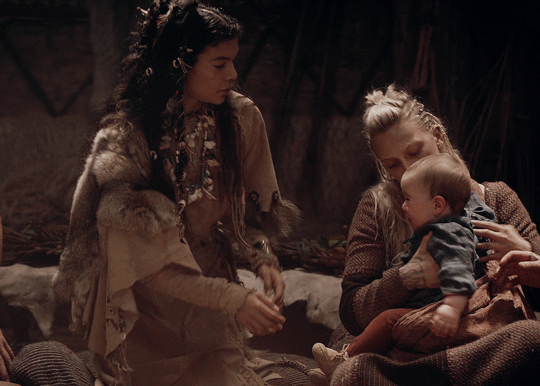

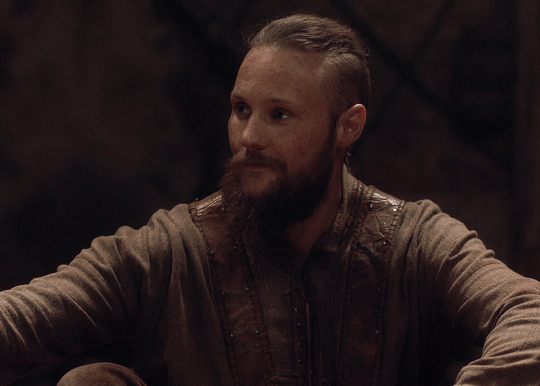


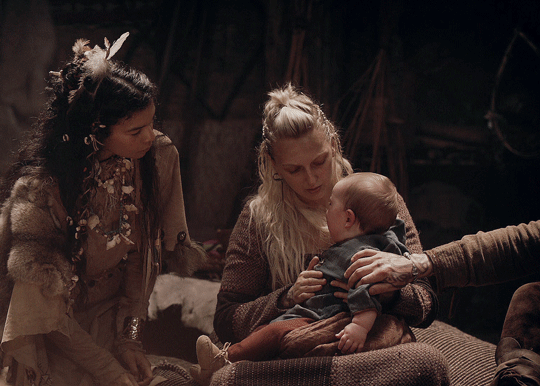
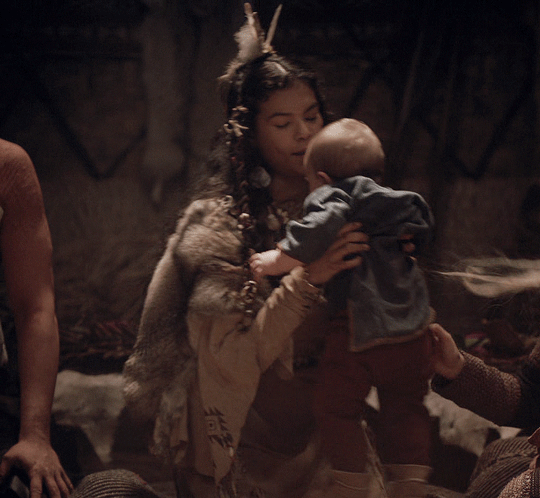

Pekitaulet instructing Nikani to help with a fussy Baby Ragnar
Ubbe and Torvi's reluctance to hand over their son as requested by @daybreak96
#vikings#ubbe#ubbe ragnarsson#baby ragnar#ragnar ubbeson#pekitaulet#nikani#torvi#mi'kmaq#vtrash gifs#vikings history#filled request#daybreak96#I threw in more Nikani and Baby Ragnar because she's so cute with him
162 notes
·
View notes
Text
I just remembered Netflix's Anne with an E and the storyline with Ka'kwet that was starting in the last season being so intense and interesting like Mi'kmaq people are suffering Imperialism-
And then the show got euthanized by Netflix who imposed a closure and nvm I hope your parents eventually get you free Ka'kwet I'm getting married byeeee
#ka'kwet#anne with an e#I loved that show so much#netflix#It deserved better#why are you like this#it did what it could to close that storyline but was so rushed#not very IC with Anne#Mi'kmaq
80 notes
·
View notes
Text
In Cinderella Tales From Around the World, I've now read all the tales from the United States and Canada. Most of these variants are Native American; some scholars think the archetype of Cinderella spread to these tribes from French Canadian settlers, but the indigenous people made it their own. There are also some US and Canadian variants from non-indigenous sources, which the book follows with two similar versions from the West Indies.
*The first Native American variant in this book is an Ojibwe version. The heroine is abused by her stepmother and two stepsisters, but a manitou (spirit) gives her fine clothes and a magical box in which to secretly store them. Some time later, the stepmother sends her to fetch water, and along the way the girl meets her grandmother, who warns her that she'll hear music, but not to look back in its direction – if she succeeds in not looking back, she'll become more beautiful than ever. She does, so one of the stepsisters sets out to the same place to gain new beauty too, but she ignores the grandmother's warning, looks back, and turns ugly. Some time after this, a dance takes place, the heroine attends wearing the dress the manitou gave her, and the chief's son falls in love with her and marries her. But after she gives birth to a son, the stepmother sticks a magic pin in her that turns her into an elk, and one of the stepsisters takes her place. Yet as in similar European variants, every day the elk comes back to nurse her baby, and eventually her husband finds her and pulls out the pin, restoring her to human form. He then has the stepmother and stepsisters executed.
*Another variant, from the Mi'kmaq and Algonquin peoples, is one I grew up with: it's been adapted into two picture books, The Rough-Face Girl and Sootface, and as "The Indian Cinderella" in an episode of the cartoon series Adventures from the Book of Virtues. The heroine lives with her father and her two cruel older sisters, who destroy her beauty by burning her with hot coals, singing off her hair and leaving her face covered with scars. Meanwhile, near their village lives a great, mystical chief or warrior who is invisible, or who can make himself invisible. Every girl in the village wants to marry him, including the two sisters, and they all dress in their finest to go and meet him. But the Invisible One will only marry a maiden who can see him, so his (visible) sister meets each one of them, and tests them by asking what his sled-strap and bowstring are made of. All the maidens, including the heroines' sisters, tell lies and are sent away. But the heroine dresses herself in improvised clothes and goes too, despite all her neighbors jeering at how ugly and shabby she looks. When the Invisible One's sister asks the usual question, she replies that his sled-strap is the rainbow and his bowstring is the Milky Way. This is the true answer. The sister then bathes her, which makes her hair grow back and heals her burn scars to reveal her natural beauty, and she marries the Invisible One.
**There's also a Huron variant on this story, with long additional episodes where suitors court the two older sisters, but they disdain the men, set near-impossible tasks for them, and when they succeed, finally say they'll marry them only when they've finished embroidering fabrics for the wedding. They force their younger sister to do the embroidery for them, but every night, like Penelope in The Odyssey, they undo some of it. Eventually, however, a great invisible chief comes to call, and the older sisters lie that they can see him but describe him inaccurately, while the youngest sister describes his true, otherworldly appearance and becomes his bride.
*The Zuñi tribe has a variant called The Turkey Girl, which stands apart from most others by having a sad ending. The heroine is a poor orphan, who either lives alone or with abusive sisters depending on the version, and earns her living by herding turkeys. One day a sacred dance is held and she longs to attend, so her turkeys magically wash her and dress her in finery and jewelry. But they warn her to come back before sunset to lead them home and feed them. The girl promises to do so, but at the dance she enjoys herself so much that she doesn't bother to go home in time. She comes back after dark to find that all the turkeys have fled into the wild, abandoning her to loneliness and poverty. This tale seems to be an allegory, warning poor people whose fortunes improve not to forget their old friends or be ungrateful to those who helped them.
*The book also includes retellings of Perrault's Cendrillon from Canada, the Southern US (written in slave dialect), the Bahamas, and Martinique. They're not different enough from from Perrault's version to warrant descriptions, but it's interesting to see the story told with each of these places' local flavors and dialects.
@ariel-seagull-wings, @adarkrainbow, @themousefromfantasyland
#cinderella#fairy tale#variations#cinderella tales from around the world#heidi ann heiner#native american#ojibwe#mi'kmaq#algonquin#zuni#french canadian#southern usa#african american#the west indies#the bahamas#martinique
11 notes
·
View notes
Text

21 notes
·
View notes
Text
Indigenous Tumblr, please interact!
TW: genocide and linguocide in America
I'm a linguistic enthusiast and non-American. I love how diverse the USA & Canada are - thousands and thousands of indigenous languages and they all are unique and so different from any language I've ever seen and heard. But all of them are endangered because the colonizers were erasing them with their speakers. Yet some indigenous languages are still spoken today. I love learning about these languages, but it feels like a colonists approach to learn about an indigenous language without learning its role in its community.
Dear indigenous people of Americas, where your languages are used today? What's their status in society? How do you feel about (not) knowing them? Is it a symbol of pride, resistance, and being part of your community or something that died long time ago? Do kids learn it in school?
If you feel uncomfortable with sharing your experience, it's fine to keep scrolling)
#indigenous#language#nativeamericans#native american#first nations#Cree#cherokee#Navajo#lakota#ojibwe#mi'kmaq#inuit#blackfoot#anishinaabe#Hopi
47 notes
·
View notes
Text
This is Elder Rita Joe

She is the honouree of 2023's Nova Scotia Heritage Day. Rita Joe is a household name among the Mi'kmaq as a poet laureate, her most famous work being "I Lost My Talk", about the struggle of having her language stolen in residential school. Maybe you've heard it before, or maybe this is your first prompt to look it up. I strongly suggest expanding your interest to her other works as well; she has a huge poetry collection of beautifully crafted words.
youtube
383 notes
·
View notes
Text

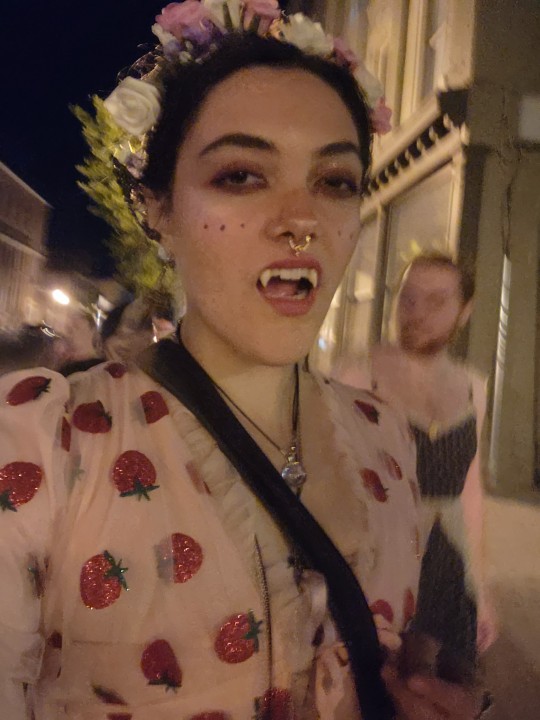
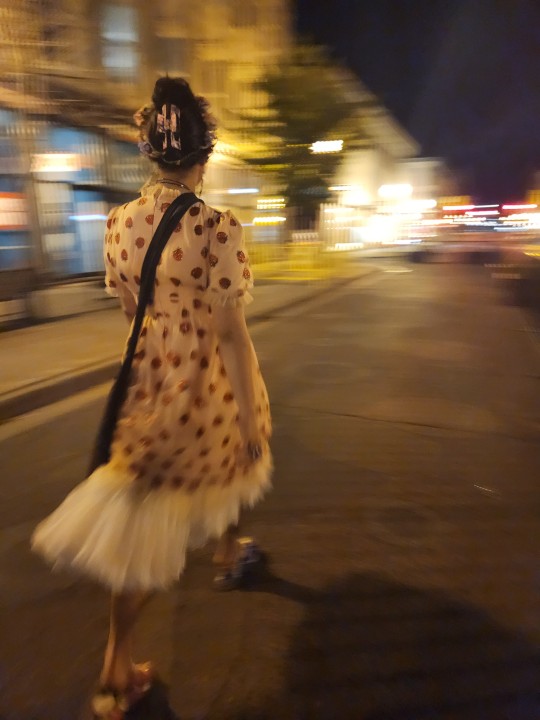
Strawberry Faerie ���
#shadow shadow what a show#hot shadow summer#mi'kmaq#shadow#faerie#cottagecore#fairycore#strawberry dress
34 notes
·
View notes
Text
i finally found the thing i've been looking for
searching for, for years
i finally found it on an island out east
and there it tasted just as i'd imagined it would
rich chocolate, delicious and sweet
where i couldn't smell the difference in the air
but i could feel it on my skin
where i found myself in that rich red dirt
where it fades to soft amber sand
where it fades to an endless horizon of steely blue
and when i found it again here
at home, in the gray world
of tall glass buildings and honking cars
and the gasoline i can smell
it doesn't quite taste the same here, no
synthetic sugar, not quite right
not like it did on that island out east
with the rolling hills and the deep green trees
and the goats and the cows and the potato fields
ah, that's home, that's where i'm from
if not me then my family
and my family's family
l'nuk, on the mi'kma'ki
prince edward island/epekwitk by laika wallace
#prince edward island#pei#epekwitk#native poetry#indigenous#indigenous poetry#native#native canadian#native american#mi'kmaq#mi'kmaw#l'nuk
8 notes
·
View notes
Text
INDIGENOUS FIRST NATIONS RESOURCES
The Anthropological Masterlist is HERE.
The First Nations people are Indigenous Canadians that are neither Inuit nor Métis.
ABENAKI ─ “The Abenaki people are an Indigenous First Nations and North American people. They are native to Quebec and the northeast United States.”
─ Abenaki Culture
─ Abenaki Language
─ Abenaki Dictionary
COWICHAN ─ “The Cowichan people are an Indigenous First Nations people. They are native to the Cowichan valley on Vancouver Island.”
─ Cowichan Information
─ Quamichan Information
CREE ─ “The Cree people are an Indigenous First Nations people. They are native to the west of Lake Superior.”
─ Cree Information
─ Cree Culture
─ Cree Language
IROQUOIS ─ “The Iroquois, or the Haudenosaunee, people are an Indigenous First Nations confederacy of people. They are native to northeastern North America.”
─ Iroquois Religion and Mythology
HAIDA ─ “The Haida people are an Indigenous First Nations people. They are native to the Haida Gwaii off the coast of British Columbia.”
─ Haida Culture
─ Haida Language
─ Haida Dictionary
MI’KMAQ ─ “The Mi’kmaq people are a First Nations people. They are native to the Northeastern Woodlands.”
─ Mi’kmaq Culture
─ Mi’kmaq History
─ Mi’kmaq Language
NOOTKA ─ “The Nuu-chah-nulth, or Nootka, people are an Indigenous First Nations people. They are native to the Pacific Northwest coast of Canada.”
─ Nootka Language
─ Nootka Language Font
─ Nootka Dictionary
NUXALK ─ “The Nuxalk, or Bellacoola, people are an Indigenous First Nations people. They are native to Bella Coola in British Columbia.”
─ Nuxalk Information
─ Nuxalk Language
─ Nuxalk Phonetics
OJIBWE ─ “The Ojibwe, or Saulteaux, people are an Indigenous First Nations people. They are native to southern Canada and parts of the Midwest United States.”
─ Ojibwe Information
─ Ojibwe Dictionary
─ Ojibwe Dictionary
SECWEPEMC ─ “The Secwépemc, or Shuswap, people are an Indigenous First Nations people. They are native to the Shuswap Country in British Columbia, Canada.”
─ Shuswap Information
─ Shuswap Language
SYILX ─ “The Syilx, or Okanagan, people are an Indigenous First Nations and North American people. They are native to Washington state and British Columbia, Canada.”
─ Okanagan Legend of the Bear Woman
─ Okanagan Legend of the Dirty Boy
─ Okanagan Language
TSIMSHIAN ─ “The Tsimshian people are an Indigenous First Nations people. They are native to coastal British Columbia and Alaska in the Pacific Northwest.”
─ Tsimshian Culture
─ Tsimshian Mythology
#resources#abenaki#cowichan#cree#iroquois#haida#mi'kmaq#nootka#nuxalk#ojibwe#secwepemc#syilx#tsimshian
82 notes
·
View notes
Text
The Chenoo With An Icy Heart pt. 2
Part 1
Chenoo was now part of the family, and would go out hunting. He and the husband often went out to hunt giant beasts of legends. If it started to get dark while they were still a long way from home, Chenoo would give the husband a piggy back ride and run the rest of the way home. That way the hunter’s wife never had to worry about her family being safe.
However one day, Chenoo sensed his wife approaching. He was sure she would be angry about his change back into a human. She would with fight him and surely tear him apart, as Chenoo was no longer strong enough to defeat her. He asked his daughter-in-law to bring him the bag he had brought with him. She was to look inside, and if what she saw displeased her- she was to throw it away and instead bring the smaller bag inside it.
The hunter's wife got the back, and saw inside was human remains. If Chenoo ate them again, he would return to being a full Chenoo, and all the strength and horror that involved. Instead the woman threw them away, and brought the smaller bag. Inside this bag was a horn from a horned serpent. Chenoo gave the horn to his son-in-law; and told him to wait for he called for help. If everything worked out right, this might just save Chenoo’s life.
The couple hid, as the Chenoo wife approached. She was fierce and violent, and shouted horrible threats- then the two battled. Mountains tumbled, forests were knocked down as the two wrestled. Chenoo cried for help; and his son-in-law jumped into the fray. He was ordered to stab the serpent horn into her ear. When he did so, it magically grew- sprouting out the other side of her head, embedding itself into the ground.
The now dead Chenoo woman had to be hacked into smaller pieces- a difficult task as Chenoo bones are stronger than hard wood. Each piece had to be burned to ash, less the flesh turn into a new Chenoo. The last piece was the heart, which was made of the hardest of ice. They had to carefully chip the pieces until they could melt the whole thing. It was a long task, but they finished by the time spring rolled around.
The couple decided it was time to return to their tribe in the Southeast. They made themselves a canoe out of birch bark, and Chenoo a canoe out of moose skins. Chenoo always took the lead; this gave him time to prepare a place for them all to spend the night.
However the further they got, the weaker Chenoo became. He shrank in size, and slowly turned back into a regular sized old man. By the time they reached the tribe, all of Chenoo's old wounds had healed, but he was terribly sick. Part of him was still a creature of the Northern ice, and the warmth of the South was killing him- though he refused to return to the way he had been. As he died, he thanked his daughter-in-law. The last bit of cold left him as a grateful tear drop. His passing was honored, no different than an honored elder of the tribe.
The End
Notes: The only thing I changed was the ending, where a black robe taught Chenoo about religion and saved his soul. It didn’t feel right. The ending I did is inspired by Hans Christian Andersen’s Snow Queen. It was the only way I could think of depiction how the kindness the couple showed warmed his heart to the point that he completely returned to being human by the end.
5 notes
·
View notes
Link
Mi'kmaw beaded jewellery, arrow heads, tomahawks and other tools have come home to Cape Breton after spending decades in the archives of Mount Allison University in New Brunswick.
A ceremony was held at the Membertou Heritage Park on Monday to welcome a collection of 250 artifacts sacred to the Mi'kmaq. Many of the objects are believed to have originated in Cape Breton.
Heritage park museum manager Jeff Ward said the artifacts create a better understanding of how the Mi'kmaq hunted, traded and how long they've been inhabiting the Earth.
The objects covering four tables include several pipes, crystals, beaded jewelry and fossils which will now be on display in Membertou, located next to Sydney.
Ward said that the artifacts will help breaking down a lot of barriers and prove Mi'kmaw history.
"These exhibits and these artifacts are truth," Ward said. "They're the physical truths of a time period proving that we've been here 27,000, 30,000, 50,000 [years] longer than what we've been taught."
Continue Reading.
Tagging: @politicsofcanada
#Nova Scotia#Cape Breton#mi'kmaq#Indigenous#First Nations#cdnpoli#canada#canadian news#canadian politics#canadian#repatriation
405 notes
·
View notes
Text
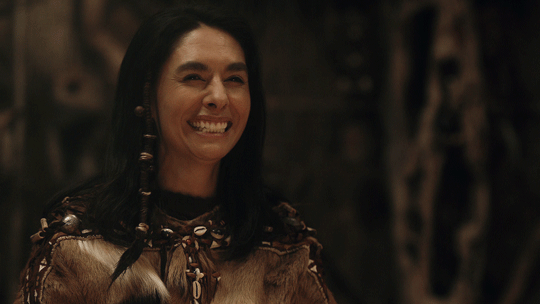


Mi'kmaq and joy - in honor of Indigenous Peoples Month in Canada
#vikings#mi'kmaq#sagamaw pekitaulet#nikani#baby ragnar#mi'kmaq child#pekitaulet's people#vtrash gifs#vikings history#indigenous peoples month canada#I really loved that moment when they were all laughing together
37 notes
·
View notes